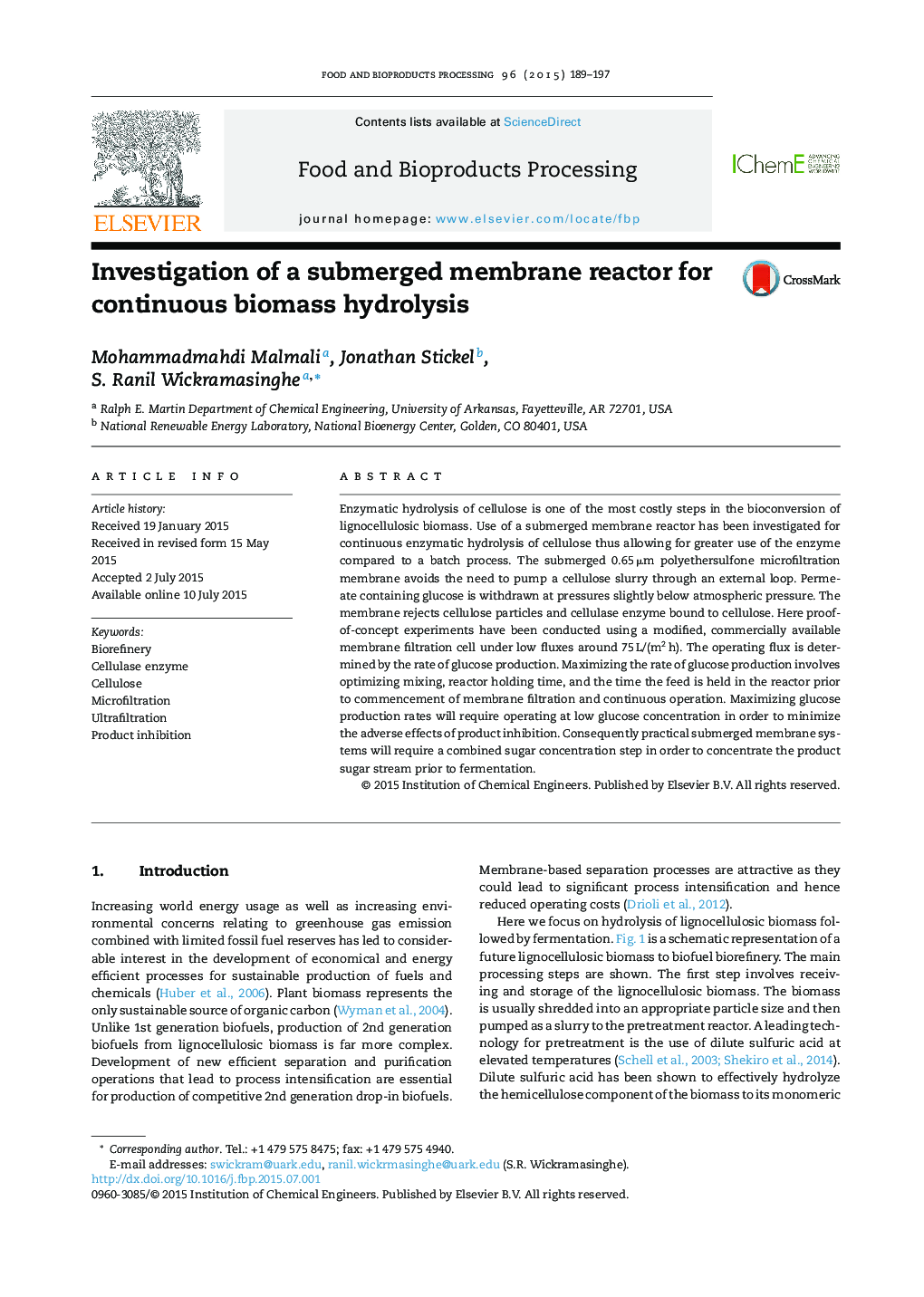| Article ID | Journal | Published Year | Pages | File Type |
|---|---|---|---|---|
| 18835 | Food and Bioproducts Processing | 2015 | 9 Pages |
•Designed submerged membrane reactor for continuous enzymatic hydrolysis of cellulose.•Operate at higher solids loading.•Cellulase enzyme bound to cellulose rejected by low pressure microfiltration membrane.•Pre-holding time required for enzyme to bind to cellulose prior to filtration.•Maximize glucose production rate by running reactor at low glucose concentration.
Enzymatic hydrolysis of cellulose is one of the most costly steps in the bioconversion of lignocellulosic biomass. Use of a submerged membrane reactor has been investigated for continuous enzymatic hydrolysis of cellulose thus allowing for greater use of the enzyme compared to a batch process. The submerged 0.65 μm polyethersulfone microfiltration membrane avoids the need to pump a cellulose slurry through an external loop. Permeate containing glucose is withdrawn at pressures slightly below atmospheric pressure. The membrane rejects cellulose particles and cellulase enzyme bound to cellulose. Here proof-of-concept experiments have been conducted using a modified, commercially available membrane filtration cell under low fluxes around 75 L/(m2 h). The operating flux is determined by the rate of glucose production. Maximizing the rate of glucose production involves optimizing mixing, reactor holding time, and the time the feed is held in the reactor prior to commencement of membrane filtration and continuous operation. Maximizing glucose production rates will require operating at low glucose concentration in order to minimize the adverse effects of product inhibition. Consequently practical submerged membrane systems will require a combined sugar concentration step in order to concentrate the product sugar stream prior to fermentation.
Graphical abstractSubmerged membrane for continuous enzymatic hydrolysis.Figure optionsDownload full-size imageDownload high-quality image (67 K)Download as PowerPoint slide
